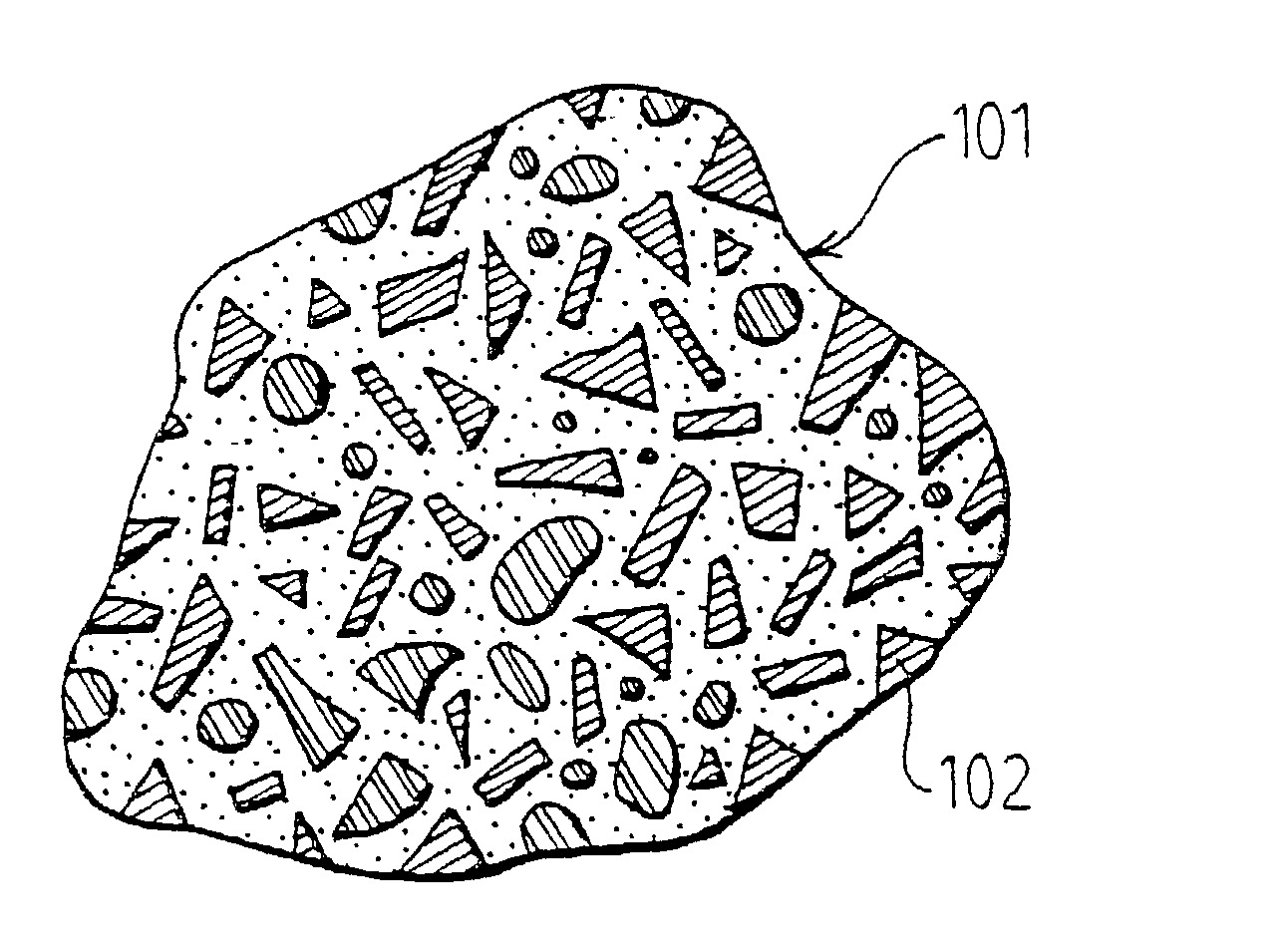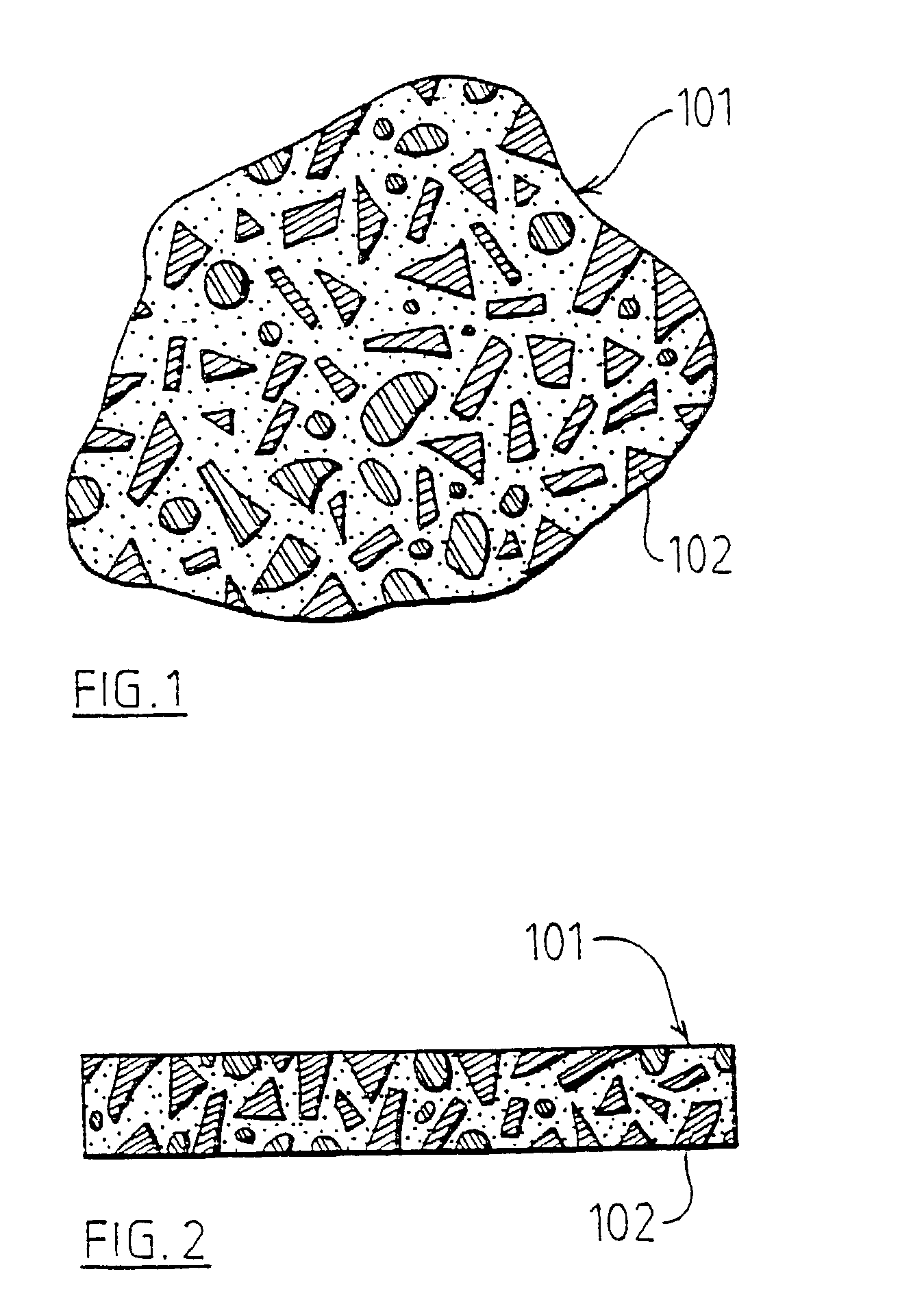Cementitious composition
a technology of cementitious composition and cementitious products, applied in the direction of climate sustainability, solid waste management, sustainable waste treatment, etc., can solve the problems of high density of cementitious products, small percentage of plastics materials that are set aside, and excessively difficult to recycle plastics efficiently
- Summary
- Abstract
- Description
- Claims
- Application Information
AI Technical Summary
Benefits of technology
Problems solved by technology
Method used
Image
Examples
Embodiment Construction
[0023] The following description details the preferred embodiments of the present invention. They are given by way of example only and it will be appreciated by those skilled in the field that a number of variations may be made to the examples without departing from the scope of the present invention.
[0024] In one preferred form of the present invention there is provided a cementitious article or building material 101 containing a quantity of recycled plastics particles 102. Such particles may be in the form of granulated, flaked, chipped or by other means comminuted plastics materials. Such plastics particles 102 are formed from a gallimaufry, or a variety of different types, of plastics items as described below thus producing a heterogeneous population of plastics granule however, it would also be possible to use a single type of plastics material. In this particular embodiment of the invention the particles 102 are in granulated form and are derived from two different types of pl...
PUM
| Property | Measurement | Unit |
|---|---|---|
| Fraction | aaaaa | aaaaa |
| Fraction | aaaaa | aaaaa |
| Fraction | aaaaa | aaaaa |
Abstract
Description
Claims
Application Information
 Login to View More
Login to View More - R&D
- Intellectual Property
- Life Sciences
- Materials
- Tech Scout
- Unparalleled Data Quality
- Higher Quality Content
- 60% Fewer Hallucinations
Browse by: Latest US Patents, China's latest patents, Technical Efficacy Thesaurus, Application Domain, Technology Topic, Popular Technical Reports.
© 2025 PatSnap. All rights reserved.Legal|Privacy policy|Modern Slavery Act Transparency Statement|Sitemap|About US| Contact US: help@patsnap.com


